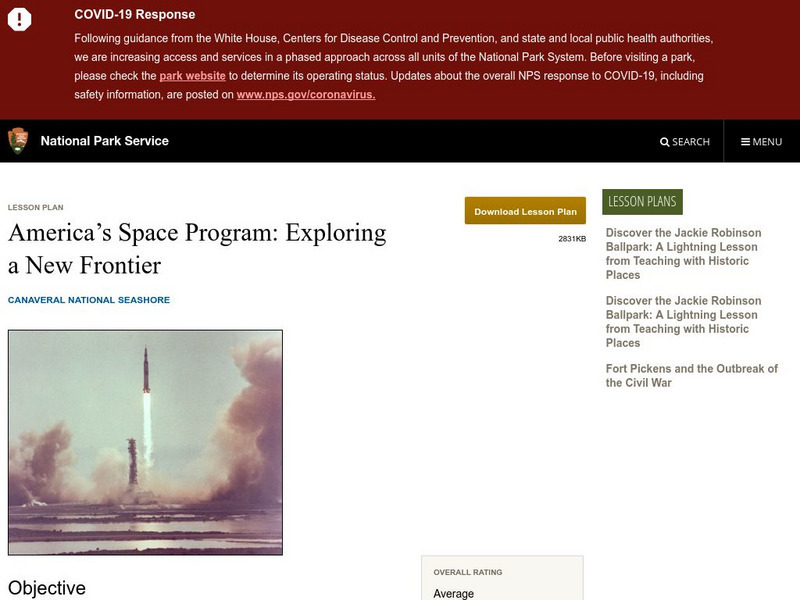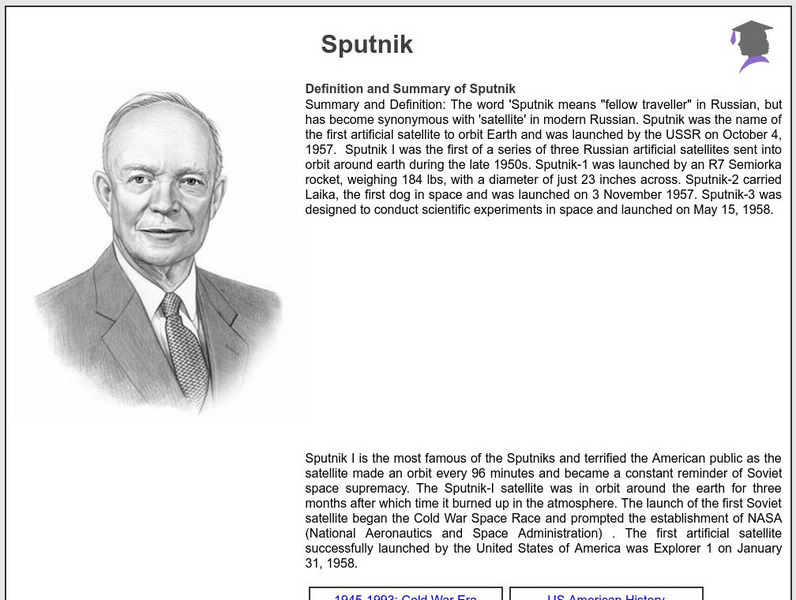Hi, what do you want to do?
Mr. E. Science
Manned Spaced Exploration: From Start to Gemini
Seven percent of Americans believe the moon landing was staged. The presentation covers manned space exploration from the beginning of the space race through the Gemini missions. The lesson is the 23rd in a set of 26.
Curated OER
Space Race Word Search
In this space race worksheet, students study the 18 words related to the 20th Century space race and Cold War. Students locate the words within the word search.
Curated OER
Milestones in the Space Program
Students brainstorm names of astronauts from NASA space missions. They are explained that the Cold War was not actually a war but pervasive tension that existed between the United States and the Soviet Union for several decades...
Curated OER
Milestones in Human Spaceflight
Learners investigate the history and goals of NASA and human spaceflight. In this space science lesson, students answer questions about one of seven manned space programs and print pictures from the mission. As a...
Curated OER
United States -- Soviet Cooperation
Students examine the competition between the United States and Russia to put the first man in space. In groups, they use the internet to identify areas in which the two countries cooperated with one another to promote space exploration....
Curated OER
The Planets Moon
Students explore the theories of the creation of the universe and examine the properties of celestial bodies. They analyze the relationship between the sun, Earth and other planets. They discover the infinite potential of the science of...
Other
The Space Race
Although the space race was originally a competition between two Cold War foes,it ultimately resulted in many benefits for the people of the Earth. Find information on the Mercury, Gemini, and Apollo, and Soviet space programs,...
Ducksters
Ducksters: Quiz: Space Race of the Cold War for Kids
History Questions: Space Race Quiz, Test, and WebQuest
Curated OER
National Park Service: America's Space Program Exploring a New Frontier
This site includes a lesson for teachers to use when teaching about America's space program. Also included is the history of the space program, maps, readings, images of the space program, and benefits that resulted from space research.
Ducksters
Ducksters: The Cold War for Kids: Space Race
Kids learn the history of the Space Race during the Cold War. A race between the United States and the Soviet Union to put a man on the Moon.
Khan Academy
Khan Academy: The Start of the Space Race
Looks at the USSR's launch of Sputnik and the galvanizing effect it had on America's motivation to fund aerospace research. NASA was soon formed and more funding was put in place for public education in the sciences and math.
Smithsonian Institution
National Air and Space Museum: Apollo to the Moon
This resource offers an in-depth exploration of the U.S. space program and the role President John F. Kennedy took in setting the agenda for manned space flight to the moon.
PBS
Pbs: Red Files: Secret Soviet Moon Mission
PBS offers biographies and stories from the early days of the Soviet Space program, which prompted the Space Race and nuclear arms race between the U.S. and the former Soviet Union.
A&E Television
History.com: The Space Race: Interactive Universe
A virtual journey through space offers photos and facts about Earth and its neighboring planets, comets, other celestial bodies of the Solar System, and the Milky Way and Andromeda galaxies.
A&E Television
History.com: Why the Air Force Almost Blasted the Moon With an H Bomb
Detonating a thermonuclear weapon on the moon? It sounds like the bizarre scheme of a deranged comic-book villain -- not a project initiated inside the U.S. government. But in 1958, as the Cold War space race was heating up, the U.S. Air...
Smithsonian Institution
Smithsonian Education: Apollo 11 Walking on the Moon
Check out this interactive website about the space race.
Siteseen
Siteseen: American Historama: Sputnik
Detailed information on Sputnik, the first artificial satellite to orbit Earth, launched by the USSR on October 4, 1957.



















